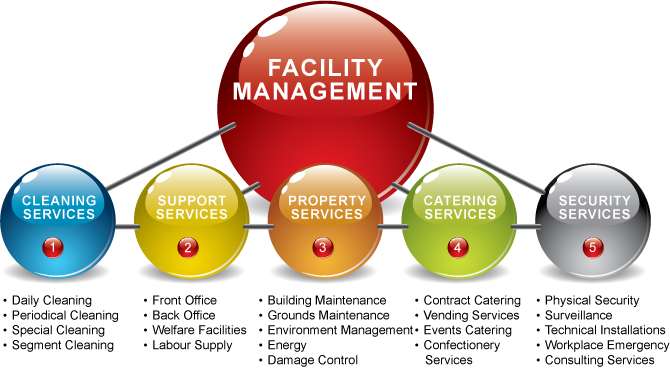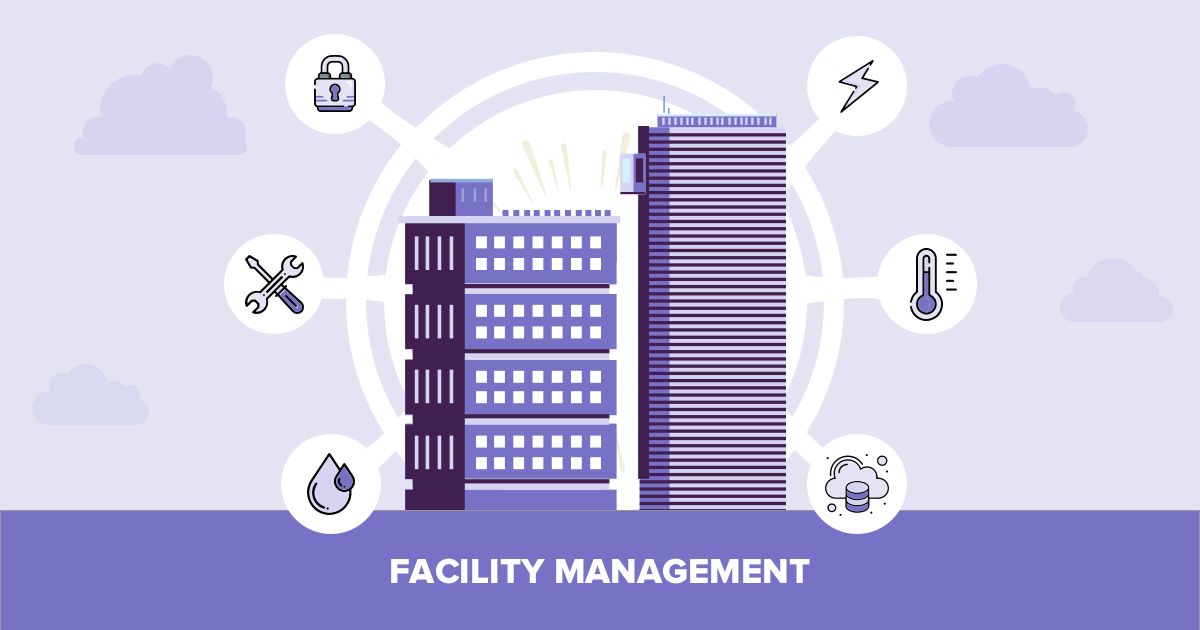Secret Fads Forming the Future of Center Administration in 2024
As we expect 2024, the landscape of facility administration is poised for considerable makeover, driven by a number of vital patterns. The assimilation of clever building technologies and a shift in the direction of data-driven decision-making pledge to improve functional effectiveness while prioritizing sustainability in technique. Moreover, the development of crossbreed job versions is reshaping office environments, necessitating cutting-edge style remedies that satisfy evolving employee needs. Amid these modifications, the concentrate on resident wellness remains to acquire grip, underscoring the value of a healthy and balanced office. How these fads will materialize in method continues to be a vital question for market specialists.
Smart Structure Technologies

Smart building innovations incorporate a wide array of systems, including intelligent lighting, HVAC controls, and protection systems. By integrating these systems, center supervisors can keep track of and change criteria in real-time, resulting in significant decreases in power waste and operational expenses. For example, smart sensors can discover tenancy levels and readjust lights and temperature level appropriately, guaranteeing that power is just made use of when necessary.
Additionally, these modern technologies promote boosted information collection, permitting companies to track use patterns and determine chances for additional renovations. The execution of clever building technologies not only adds to sustainability goals yet additionally produces healthier workplace that can enhance employee efficiency and complete satisfaction.
As we relocate right into 2024, the fostering of wise building modern technologies will likely accelerate, reflecting a wider shift towards even more intelligent, responsive, and sustainable center management practices.
Data-Driven Decision Making
Progressively, organizations are leveraging data-driven choice making to boost center monitoring techniques. By using information analytics, facility managers can derive actionable insights that substantially boost operational performance and resource allocation. The assimilation of advanced technologies, such as IoT sensing units and real-time tracking systems, allows the collection of large quantities of data on structure efficiency, occupancy prices, and energy consumption.
This riches of details enables center managers to identify patterns, forecast maintenance demands, and proactively address problems prior to they intensify. Predictive analytics can anticipate equipment failings, reducing downtime and repair service costs. In addition, data visualization devices assist in far better interaction amongst stakeholders, making sure that educated decisions are made collaboratively.
Moreover, data-driven methods enhance calculated preparation by enabling center managers to examine the performance of current practices and make informed options relating to financial investments in modern technology or infrastructure. As organizations significantly focus on operational quality, data-driven decision making is positioned to become a cornerstone of effective facility monitoring strategies in 2024 and beyond. Inevitably, the ability to take advantage of data properly will encourage companies to develop more efficient, productive, and resilient facilities.
Sustainability and Eco-friendly Practices
The emphasis on data-driven decision making naturally aligns with the growing focus on sustainability and green practices within facility management. As organizations increasingly prioritize environmental responsibility, center managers are leveraging analytics to optimize source usage, minimize waste, and reduce carbon footprints. This tactical approach enables the assimilation of energy-efficient systems, such as LED lights, clever a/c controls, and renewable resource sources into facility procedures.
Additionally, the application of sustainable practices expands past energy consumption. Center supervisors are embracing green materials and promoting recycling campaigns to produce a circular economic situation within their centers. This not only boosts the ecological profile of the company yet likewise fosters a culture of sustainability amongst workers.
Compliance with environmental policies is an additional crucial facet driving the adoption of green techniques. By go to my site using information analytics, facility supervisors can keep track of compliance metrics and determine areas for enhancement, guaranteeing adherence this page to neighborhood and worldwide sustainability criteria.
Hybrid Job Models
A substantial shift in the direction of hybrid job models is reshaping the landscape of facility monitoring in 2024. This paradigm integrates in-office and remote work, requiring a reevaluation of room usage, source allocation, and worker involvement techniques. Organizations are significantly recognizing the significance of adaptable workspaces that deal with varied needs and choices.
Facility supervisors need to adapt by implementing functional office designs that sustain collective initiatives while supplying areas for concentrated work. This consists of the combination of technology to promote seamless interaction and partnership amongst in-office and remote employees. Smart structure services, outfitted with sensing units and analytics, enable for real-time monitoring of room usage, making it possible for organizations to maximize their environments successfully.
Additionally, crossbreed job versions emphasize the demand for reliable center management that prioritizes employee experience. In essence, the hybrid work design is changing center administration, urging an aggressive strategy to meet the developing demands of the workforce.
Enhanced Resident Wellness
As organizations accept hybrid work models, a heightened concentrate on resident wellness is becoming integral to center monitoring strategies. Facility Management. This change identifies that a healthy and balanced and pleased workforce straight influences performance and retention prices. Facility managers are currently focusing on atmospheres that promote physical and psychological health, incorporating components such as natural lights, biophilic style, and easily accessible wellness resources

Technology plays a vital duty in this evolution. Smart building systems can check ecological aspects and readjust setups in real-time, ensuring optimal comfort levels - Facility Management. Additionally, comments systems, such as occupancy sensing units and worker studies, permit center supervisors to consistently refine wellness initiatives based on occupant needs.

Verdict
In 2024, the future of facility monitoring will certainly be significantly influenced by the integration of wise building innovations and data-driven decision-making, cultivating boosted functional performance. These trends collectively underscore the evolving landscape of facility management in reaction to contemporary challenges and opportunities.
Center managers are adopting eco-friendly products and advertising reusing efforts to produce a circular economy within their centers.A substantial change in the direction of crossbreed work models is reshaping the landscape of center monitoring in 2024.Additionally, hybrid work models emphasize the demand for reliable facility management that prioritizes staff member experience.As companies accept hybrid work versions, an enhanced focus on occupant health is coming to be important to facility management approaches.In 2024, the future of center management will certainly be dramatically influenced by the integration of clever building modern technologies and data-driven decision-making, promoting improved functional efficiency.